DK Reference books for children
Quite often adults seek age appropriate non-fiction books for their children/students that will give authentic information. In the information age where plenty of free “content” is to be found online it is not very easy persuading people to buy encyclopaedias for their wards. It is a seemingly expensive proposition when free information is readily available. Yet it is worth considering that little children’s brains are like tabula rasas who could benefit from sponging correct information rather than having to unlearn knowledge later in life. It is far more challenging to forget and start afresh rather than build upon a well-established foundation. Another school of thought claims that there is absolutely no need to give children expensive reference books to browse through. It is best such books are kept in the “ready reference” section of school libraries for them to consult on a need-to basis. I do not agree.
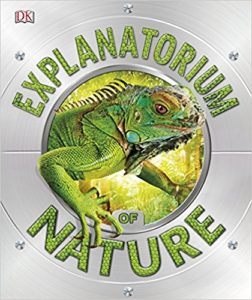 Take for instance Explanatorium Nature which offers a look at how nature works. It is a scrumptiously produced encyclopaedia with generous double-page spreads explaining basic processes such as how do the stingers of bees work? How do mantis and geckos hunt? How do humming birds hover? How do frogs communicate? How do snakes move? Even the metamorphosis cycle which in earlier textbooks were confined to illustrations is beautifully explained with pictures taken at different stages of a frog’s cycle from that of a tadpole to an adult. Questions are not confined to the world visible to the naked eye but micro-organisms are also discussed. No expense seems to have been spared in using pictures taken with electron microscopes to show how does algae grow? How does mould work? These are questions about nature that are forever being asked by children and adults alike. To have it produced
Take for instance Explanatorium Nature which offers a look at how nature works. It is a scrumptiously produced encyclopaedia with generous double-page spreads explaining basic processes such as how do the stingers of bees work? How do mantis and geckos hunt? How do humming birds hover? How do frogs communicate? How do snakes move? Even the metamorphosis cycle which in earlier textbooks were confined to illustrations is beautifully explained with pictures taken at different stages of a frog’s cycle from that of a tadpole to an adult. Questions are not confined to the world visible to the naked eye but micro-organisms are also discussed. No expense seems to have been spared in using pictures taken with electron microscopes to show how does algae grow? How does mould work? These are questions about nature that are forever being asked by children and adults alike. To have it produced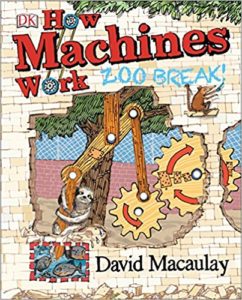 in such a luscious publication will make a child browse through a book and read it. In all likelihood also shun electronic engagement for it is ultimately a beautiful
in such a luscious publication will make a child browse through a book and read it. In all likelihood also shun electronic engagement for it is ultimately a beautiful 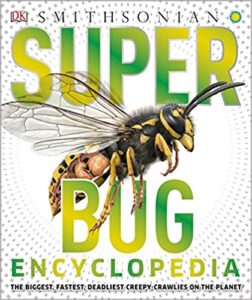 book to possess too.
book to possess too.
A similarly spectacular set of book are the Super series made in collaboration with the Smithsonian — Super Bug, Super Human, Super Nature and Super Shark. Take Super Bug for instance which has the most remarkable photography to discuss a few unusual bugs found on earth. Many of these insects look very menacing when looking at these magnified images published. Every tiny detail down to the tiny hair sensors on their legs, their eyes, antennae, devouring prey and even the spiracles found in a centipede are visible. Horrifyingly accurate photography that are mesmerising to little children. Young readers are absolutely unfazed by the creepy-crawlies magnified so many times to their actual size. It is an incredible way to showcase information and for the child to learn. It has the additional advantage of teaching children to be sensitive to the “invisible” world of living organisms around them as every individual is critical to earth’s biodiversity and important this ecology is preserved.
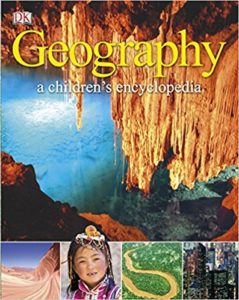 The physical landscape is equally intriguing for little minds that are just gaining consciousness about the world around them. Children are curious by nature. They also observe sharply and have a million questions. For instance, how are waves formed? Why do earthquakes occur? Why do mountains exist? How do volcanic eruptions happen? Why do different seasons exist? Why do we have day and night? These are complex questions as they delve into physical geography but children have to start somewhere. They may as well begin looking at Geography A Children’s Encyclopedia which has pictures and illustrations showing simply and clearly different physical formations. At the same time without dumbing down information using technically accurate terminology so that the young reader begins to form a firm foundation of knowledge about the earth.
The physical landscape is equally intriguing for little minds that are just gaining consciousness about the world around them. Children are curious by nature. They also observe sharply and have a million questions. For instance, how are waves formed? Why do earthquakes occur? Why do mountains exist? How do volcanic eruptions happen? Why do different seasons exist? Why do we have day and night? These are complex questions as they delve into physical geography but children have to start somewhere. They may as well begin looking at Geography A Children’s Encyclopedia which has pictures and illustrations showing simply and clearly different physical formations. At the same time without dumbing down information using technically accurate terminology so that the young reader begins to form a firm foundation of knowledge about the earth.
Designed in similar spirit to educate, inform while being visually accurate is The Complete Human Body: The Definitive Visual Guide. From the smallest component that of a cell to different body 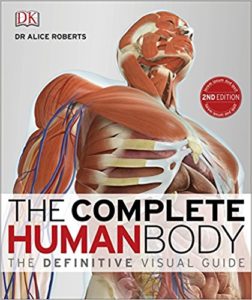 systems are described. The book is divided into five sections — the integrated body which explains evolution and cellular structures, the anatomy with the main body systems described in detail, how the body works goes into greater depth as to how each system such as the nervous system or the reproductive system works, the life cycle, and diseases and disorders. Some adults may not take kindly to such a comprehensive encyclopaedia being recommended for children for its very detailed information about the human body especially the reproductive system. On the contrary such a book is a must in every household and multiple copies of it in school libraries as it is better the next generation is accurately informed rather than misinformed and perpetuate myths about their bodies through gossip and hearsay. Also having such a book within the home or school will hopefully enable honest and frank conversations between adults and children rather than never opening up communication channels for such topics as in many homes subjects about the human body continue to be taboo.
systems are described. The book is divided into five sections — the integrated body which explains evolution and cellular structures, the anatomy with the main body systems described in detail, how the body works goes into greater depth as to how each system such as the nervous system or the reproductive system works, the life cycle, and diseases and disorders. Some adults may not take kindly to such a comprehensive encyclopaedia being recommended for children for its very detailed information about the human body especially the reproductive system. On the contrary such a book is a must in every household and multiple copies of it in school libraries as it is better the next generation is accurately informed rather than misinformed and perpetuate myths about their bodies through gossip and hearsay. Also having such a book within the home or school will hopefully enable honest and frank conversations between adults and children rather than never opening up communication channels for such topics as in many homes subjects about the human body continue to be taboo.
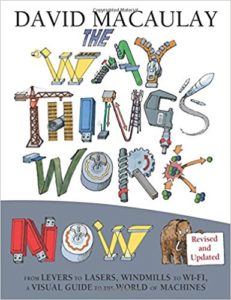 While on the question of mechanics, two other DK publications by David Macaulay, are equally stupendous — How Machines Work and The Way Things Work Now: From Levers to Lasers, Windmills to Wi-fi, a Visual Guide to the World of Machines. How Machines Work won the Royal Society’s Young People’s Prize 2016 for it is an interactive book using book production ingenuity of a pop-up book combined with that of encyclopaedic information to explain the basic principle of mechanics. For instance that of levers has a set of levers embedded in the book cover that the child can play with. The concept of a lever and a fulcrum and its applications are not always easily understood by young minds; yet in this incredible spread there are tiny elements tucked into the page which a child can pick up and use to understand how a see-saw functions, how is a balancing act achieved or even how extraordinarily heavy loads are easily picked up using the lever system. Way Things Work is a very popular DK title that has been in existence for many years and has been revised and updated a few times as well,
While on the question of mechanics, two other DK publications by David Macaulay, are equally stupendous — How Machines Work and The Way Things Work Now: From Levers to Lasers, Windmills to Wi-fi, a Visual Guide to the World of Machines. How Machines Work won the Royal Society’s Young People’s Prize 2016 for it is an interactive book using book production ingenuity of a pop-up book combined with that of encyclopaedic information to explain the basic principle of mechanics. For instance that of levers has a set of levers embedded in the book cover that the child can play with. The concept of a lever and a fulcrum and its applications are not always easily understood by young minds; yet in this incredible spread there are tiny elements tucked into the page which a child can pick up and use to understand how a see-saw functions, how is a balancing act achieved or even how extraordinarily heavy loads are easily picked up using the lever system. Way Things Work is a very popular DK title that has been in existence for many years and has been revised and updated a few times as well, 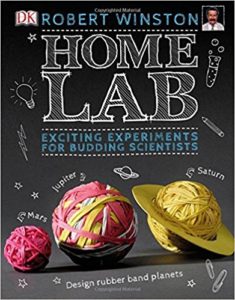 most recently in 2016. It explains simply the principles and working of many machines ranging from screws at work, sewing machines, chain hoists, aqualung, amplifier, solar cells, fingertip input, helicopters, smartphones, wi-fi, satellite navigation, speech recognition etc. It is a reference book that is entertaining,
most recently in 2016. It explains simply the principles and working of many machines ranging from screws at work, sewing machines, chain hoists, aqualung, amplifier, solar cells, fingertip input, helicopters, smartphones, wi-fi, satellite navigation, speech recognition etc. It is a reference book that is entertaining, 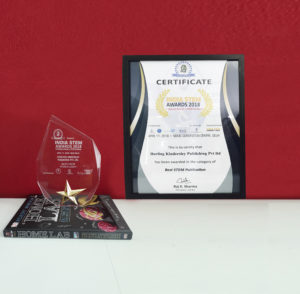 informative while being heavily illustrated it will fascinate any young reader.
informative while being heavily illustrated it will fascinate any young reader.
Finally a book like the Home Lab: Exciting Experiments for Budding Scientists which won the Royal Society’s Young People’s Award Book Prize 2017 and the best STEM publication of the year is a well-laid out book explaining simply how to conduct basic experiments at home. For instance making rubber band planets, how to make a battery out of a lemon to learn about electrical circuits, how to make invisible ink, how to make a breathing machine, to create stunning stalactites or even how to create a DNA model. Application of encyclopaedic knowledge garnered and learning applications of it using ingredients found mostly at home is a fabulous way of introducing children to experiential learning. It is a form of learning that children are never likely to forget. Also it will teach them mental agility to apply their bookish knowledge.
Increasingly it has become critical in this noisy world that children learn skills and acquire knowledge rather than remain passive recipients of information as many become addicted to electronic engagement. It is this space of being entertaining, informative and offering a deeply immersive experience that these exquisitely produced DK books offer to children. These are definitely expensive books and may not always be easily considered by many parents who are constantly trying to balance household budgets. Yet to buy these titles for the children is undoubtedly a great investment as it is extremely rewarding watching a child get absorbed in the books and later watch in fascination how they regurgitate the knowledge gained. It is a magical transformation and well worth considering!
All these titles are essential go-to reference books meant for children.
All the books mentioned have been published by Dorling Kindersley or DK and are available in bookstores and online retail stores.
15 June 2018
